
Yes — lithium batteries are rechargeable, and that’s what makes them one of the most important energy storage technologies of our era. Unlike disposable alkaline batteries, lithium-ion cells are designed for thousands of charge cycles, powering everything from smartphones to large-scale solar grids.
At the core of every rechargeable lithium battery lies a lithium-ion cell, which works by moving lithium ions between the anode (negative electrode) and the cathode (positive electrode) through an electrolyte during charging and discharging.
There are multiple chemistries under the lithium family.
• Lithium-ion (Li-ion): High energy density, widely used in electronics.
• Lithium Iron Phosphate (LiFePO₄): Excellent safety, longer lifespan, and thermal stability — the ideal choice for home solar battery systems.
At Namkoo Power, we specialize in LiFePO₄ batteries, known for their durability, efficiency, and superior cycle life. These batteries can be recharged over 4,000 times with minimal degradation.
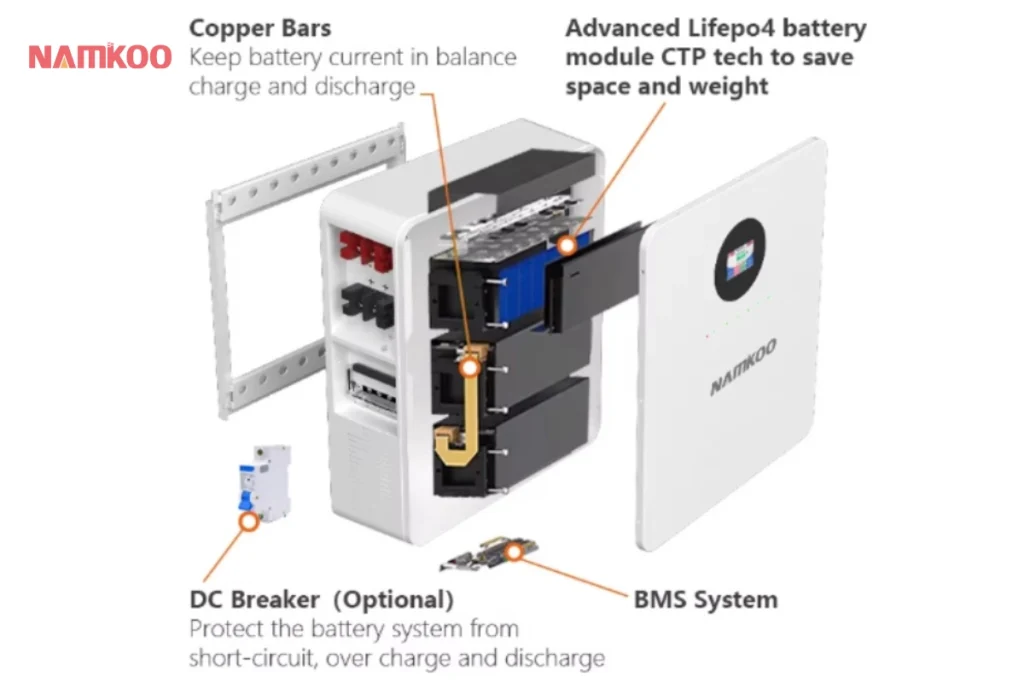
Rechargeable lithium batteries operate on the reversible movement of ions. When charging, lithium ions move from the cathode to the anode, storing energy. During discharge, ions flow back, releasing electricity.
• Charging: External power (like a solar battery charger) forces ions into the anode, storing energy.
• Discharging: Ions return to the cathode, powering your devices or home systems.
This controlled, reversible process is what makes lithium batteries rechargeable.
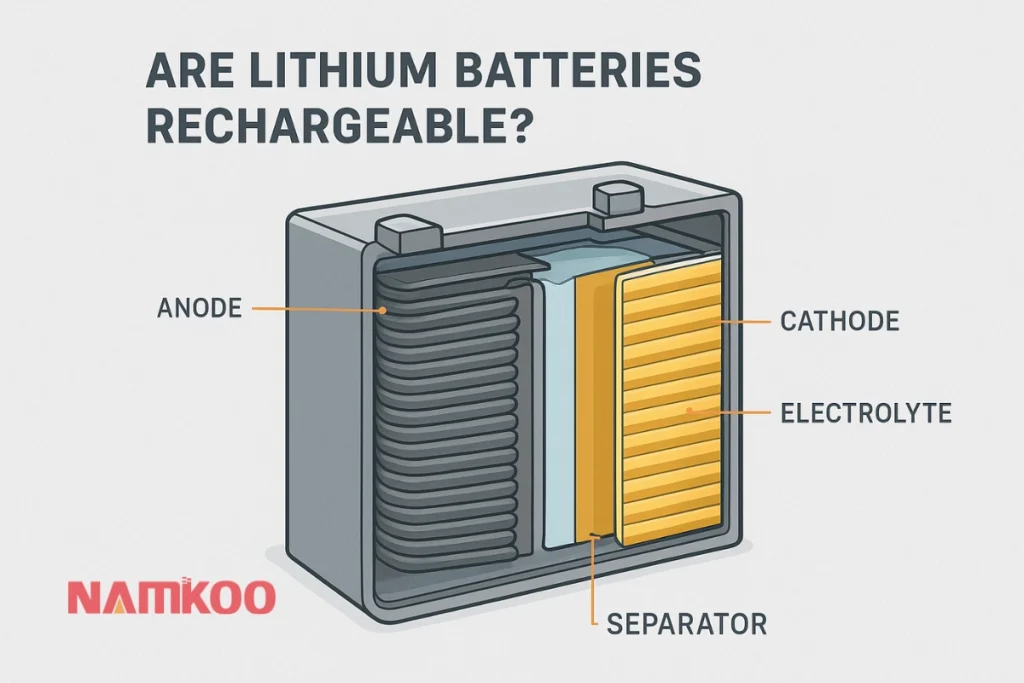
The Depth of Discharge (DoD) determines how much of a battery’s capacity is used before recharging.
Lithium batteries tolerate deep discharges up to 90–95%, which extends their usability compared to older lead-acid types.
Lithium’s atomic structure plays a key role. Its ions can move freely between electrodes without degrading the cell’s integrity. Combined with stable cathode materials and non-reactive electrolytes, lithium batteries can handle thousands of recharge cycles safely.
Anode (Graphite or Carbon): Stores lithium ions.
• Cathode (Lithium Metal Oxide or Phosphate): Releases ions during charging.
• Electrolyte: Allows ion flow while blocking electrons.
• Separator: Prevents short circuits while maintaining ion transfer.
These components enable reversible energy transfer, allowing the battery to recharge repeatedly with minimal loss.
Rechargeable lithium batteries are a cornerstone of modern solar energy systems. They store excess solar energy during the day and release it when sunlight is unavailable.
A solar battery charger (12 volt) converts solar power into DC energy, safely recharging lithium batteries.
Lithium batteries are ideal for 12V systems because of their fast charging efficiency and built-in Battery Management Systems (BMS) that prevent overcharging.
When used as a home solar battery, lithium batteries offer:
• 3× longer lifespan than lead-acid batteries
• Faster recharge cycles
• High depth of discharge
• Minimal maintenance
These advantages make lithium the preferred choice for residential solar energy storage.
As of 2025, the solar battery price depends on factors like chemistry, capacity, and brand.
| Battery Type | Average Price per kWh (USD) | Lifespan (Years) |
|---|---|---|
| Lead-Acid | $100–$150 | 3–5 |
| Gel | $120–$180 | 5–7 |
| Lithium (LiFePO₄) | $200–$350 | 10–15 |
While lithium costs more upfront, it delivers a lower lifetime cost due to longevity and efficiency.
Premium manufacturers like Namkoo Power use high-purity materials, advanced BMS technology, and rigorous testing to ensure stable voltage and performance — justifying a higher price for professional-grade battery solutions.
At Namkoo Power, we design and manufacture cutting-edge rechargeable lithium and LiFePO₄ batteries for both residential and industrial solar systems. Our technology ensures maximum energy retention, thermal safety, and consistent performance even in harsh environments.
Namkoo’s LiFePO₄ batteries offer:
• 6,000+ cycle life
• Built-in BMS protection
• Stable voltage across discharge cycles
• Eco-friendly materials
Discover our full range of solar energy storage products:
🔗 https://www.namkoopower.com/product-category/solar-battery/
We provide customized home solar battery systems, 12V solar battery chargers, and industrial-grade power storage solutions for reliable energy independence.
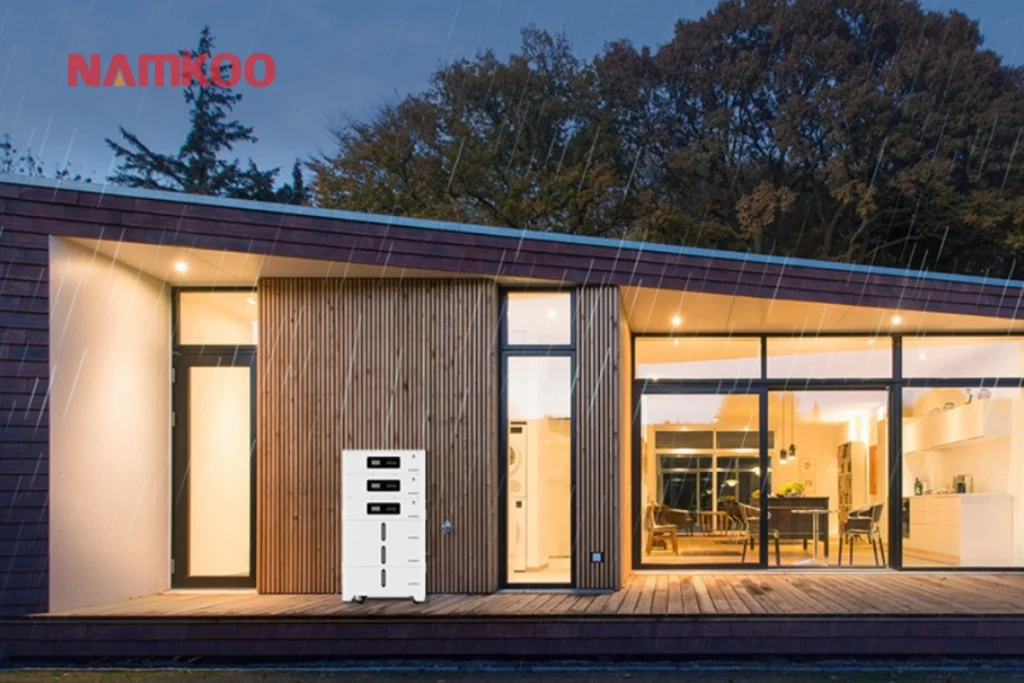
Yes — lithium-ion and LiFePO₄ batteries are designed for thousands of recharging cycles.
Typically 3,000–6,000 times, depending on usage and maintenance.
Absolutely. Use a solar battery charger (12 volt) compatible with lithium chemistry.
They last 10–15 years on average.
Lithium batteries have higher energy density, faster charging, and longer lifespan.
You can explore Namkoo Power’s full range of solutions here.
Yes — lithium batteries are 100% rechargeable, efficient, and sustainable.
They’ve revolutionized modern energy storage, especially in solar and off-grid systems.
At Namkoo Power, we continue to innovate in solar battery manufacturing, delivering durable, high-performance lithium solutions that power homes and industries worldwide.
💡 Choose Namkoo Power — where innovation meets reliability in energy storage.
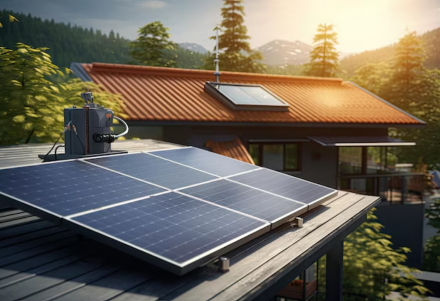
99% Don’t Know How Hybrid Inverters and Diesel Generators Work Together



Namkoo presents off grid solar power and battery energy storage solutions at the Naivasha Agricultural Exhibition, supporting Kenya’s farming sector.


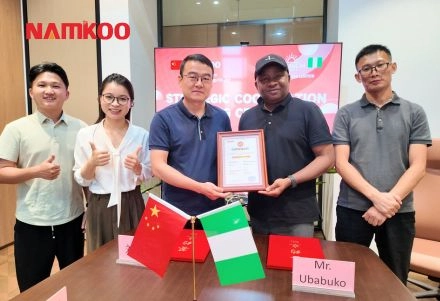
Namkoo and Ecosun Power sign a strategic partnership to deliver reliable energy storage systems, solar backup battery solutions, and PV-storage projects across Nigeria.



No.133 Jingying International Business Center, Jihua West Road, Chanchen District,Foshan,Guangdong, China (528000)
Contact Number: +86 18826309307
Email: [email protected]